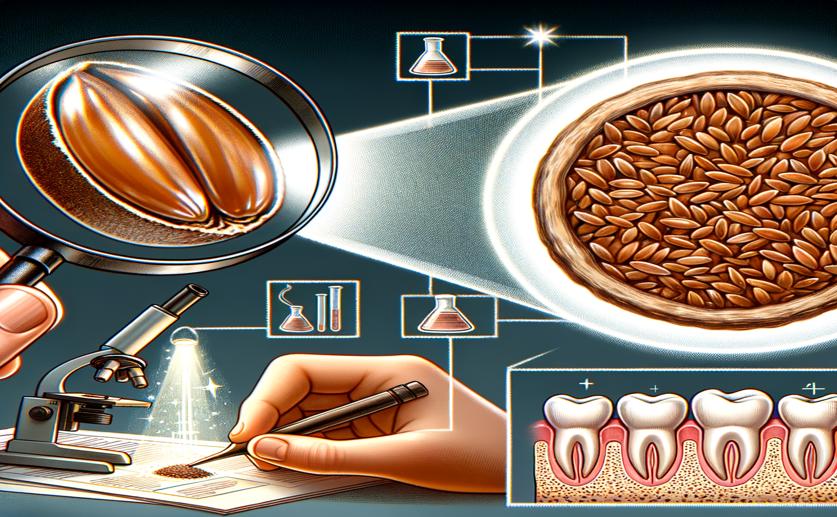
Innovative Flaxseed-Based Film for Effective Gum Disease Treatment
Greg Howard
17th May, 2024

Image Source: Natural Science News, 2024
Key Findings
- The study developed mucoadhesive bilayer composite films to treat periodontitis, aiming for better delivery of therapeutic agents
- The films had two layers: one for fast release of clove oil and another for sustained release of doxycycline hyclate
- The bilayer films showed significant antimicrobial effects and maintained stability, appropriate pH, and mechanical strength
References
Main Study
1) Flaxseed Mucilage/Hydroxypropyl Methylcellulose and Sodium Alginate/Polyvinyl Alcohol Composite Bilayer Film as a Promising Drug Carrier for Periodontal Treatment.
Published 14th May, 2024
https://doi.org/10.4274/tjps.galenos.2023.15945
Related Studies
2) Inflammatory mediators in the pathogenesis of periodontitis.
3) Effects of doxycycline, minocycline, and tetracycline on cell proliferation, differentiation, and protein expression in osteoprecursor cells.
4) The effect of locally delivered doxycycline in the treatment of chronic periodontitis. A clinical and microbiological cohort study.
5) Locally delivered doxycycline during supportive periodontal therapy: a 3-year study.



 15th May, 2024 | Jenn Hoskins
15th May, 2024 | Jenn Hoskins